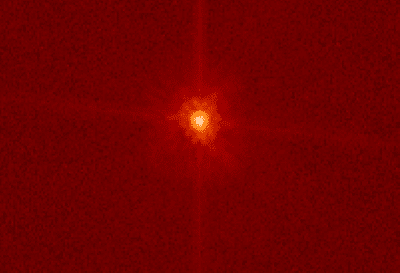The dwarf planet 136472 Makemake will reach opposition (i.e. be directly opposite the Sun seen from Earth) on Monday 28 March 2022 at 9.50 pm GMT. This means that it will both be at its closest to the Earth this year, about 51.75 AU (51.75 times the average distance between the Earth and the Sun, or about 7 714 890 000 km), and completely illuminated by the Sun. While it is not visible to the naked eye observer, the planets have phases just like those of the Moon; being further from the Sun than the Earth, 136472 Makemake is 'full' when directly opposite the Sun. The planet will be in the constellation of Coma Berenices and at its highest point in the sky at about midnight local time from anywhere on Earth (this is because the rising and setting of objects in the sky is caused by the Earth's rotation, not the movement of the object). (Even at it's very brightest 136472 Makemake will only have a Magnitude of 17.2, making it almost impossible to see with any but the largest of Earth-based telescopes, and where resolvable it will only be possible to see it as a point of light indistinguishable from a faint star.
The orbit and position of 136472 Makemake (2005 FY9) at 10.00 pm on Monday 28 March 2022. JPL Small Body Database Browser.
136472 Makemake orbits the Sun on an eccentric orbit tilted at an angle of 29.0° to the plane of the Solar System, which takes it from 37.8 AU from the Sun (37.8 times the average distance at which the Earth orbits the Sun) to 52.8 AU from the Sun (52.8 times the average distance at which the Earth orbits the Sun. With an average distance of 45.3 AU, 136472 Makemake completes one orbit around the Sun every 305 years. This means that the planet is almost stationary compared to the faster moving Earth, so that it reaches Opposition only two days earlier each year than the year before, and reaches Solar Conjunction (when it is directly on the opposite side of the Sun to the Earth), roughly six months later.
136472 Makemake was discovered on 31 Match 2005 by a team led by Mike Brown of the Palomar Observatory in California. With a diameter of 1430 km it is considered to be the fourth largest dwarf planet in the Solar System (after 134340 Pluto, 136199 Eris, and 136108 Haumea) as well as the twenty second largest body in the Solar System, excluding the Sun (several moons, including our own, are larger). Makemake is also the second-brightest Kuiper belt object, after Pluto.
The surface of 136472 Makemake appears reddish at visual wavelengths, and spectral analysis suggests that it's surface is covered primarily by methane ice, with large amounts of ethane and tholins as well as smaller amounts of ethylene, acetylene and high-mass alkanes. Notably, nitrogen, although present, is observed at much lower levels than on Pluto and Triton, where it is the most abundant ice. 136472 Makemake apparently lacks any form of atmosphere, although it does have a satellite, S/2015 (136472) 1, which is estimated to be 175 km in diameter and orbits at a distance of at least 25 000 km, with an orbital period of at least 12 days.
See also...
%20passes%20the%20Earth..png)
%20makes%20its%20closest%20approach%20to%20the%20Earth..png)

Follow Sciency Thoughts on Facebook.
Follow Sciency Thoughts on Twitter.





